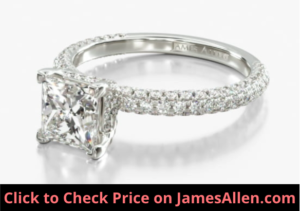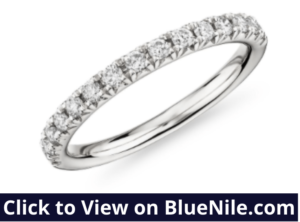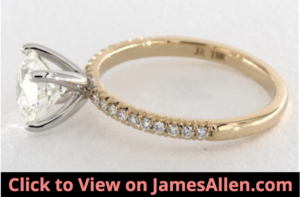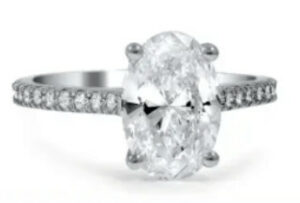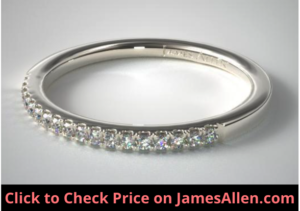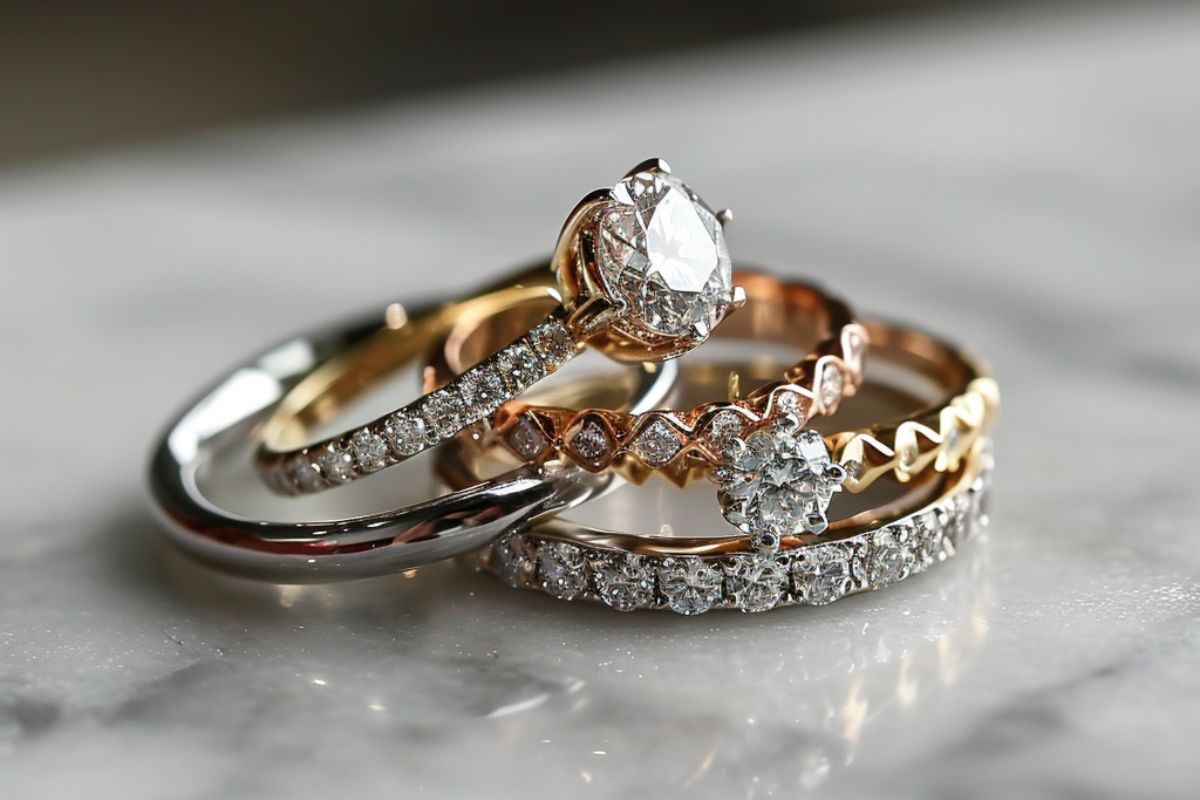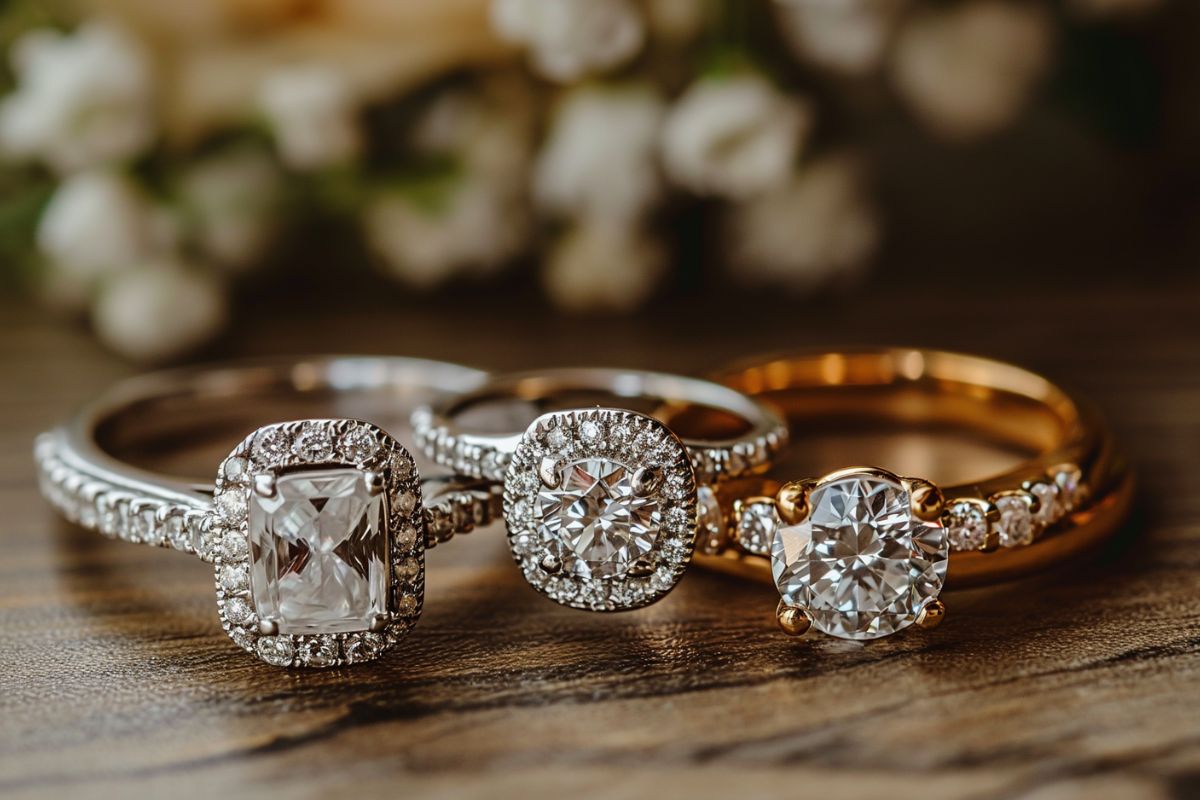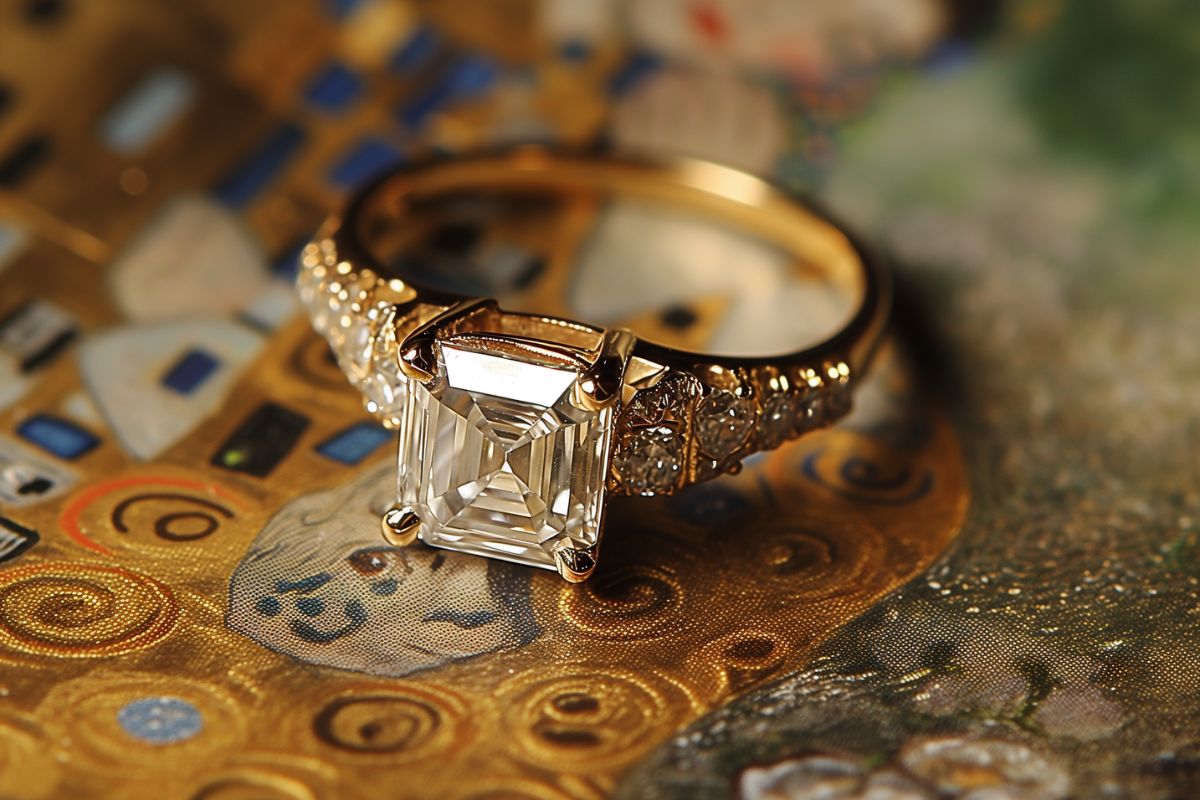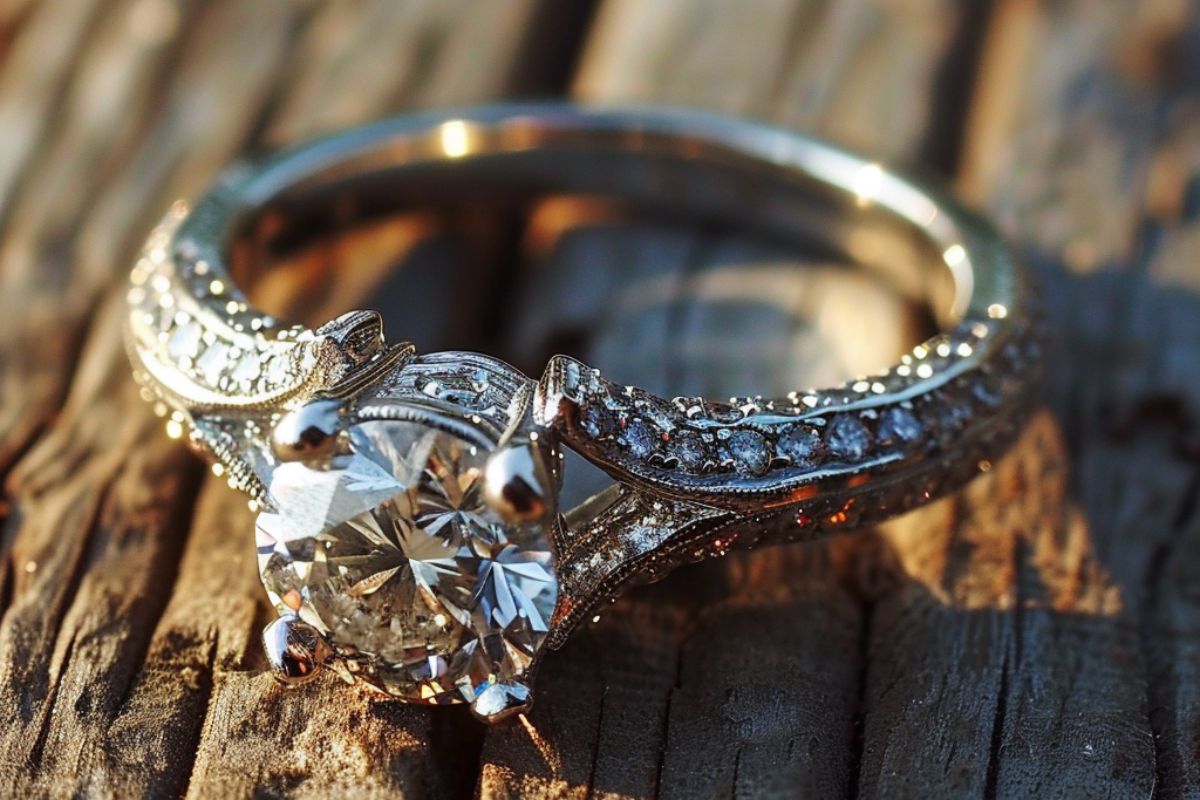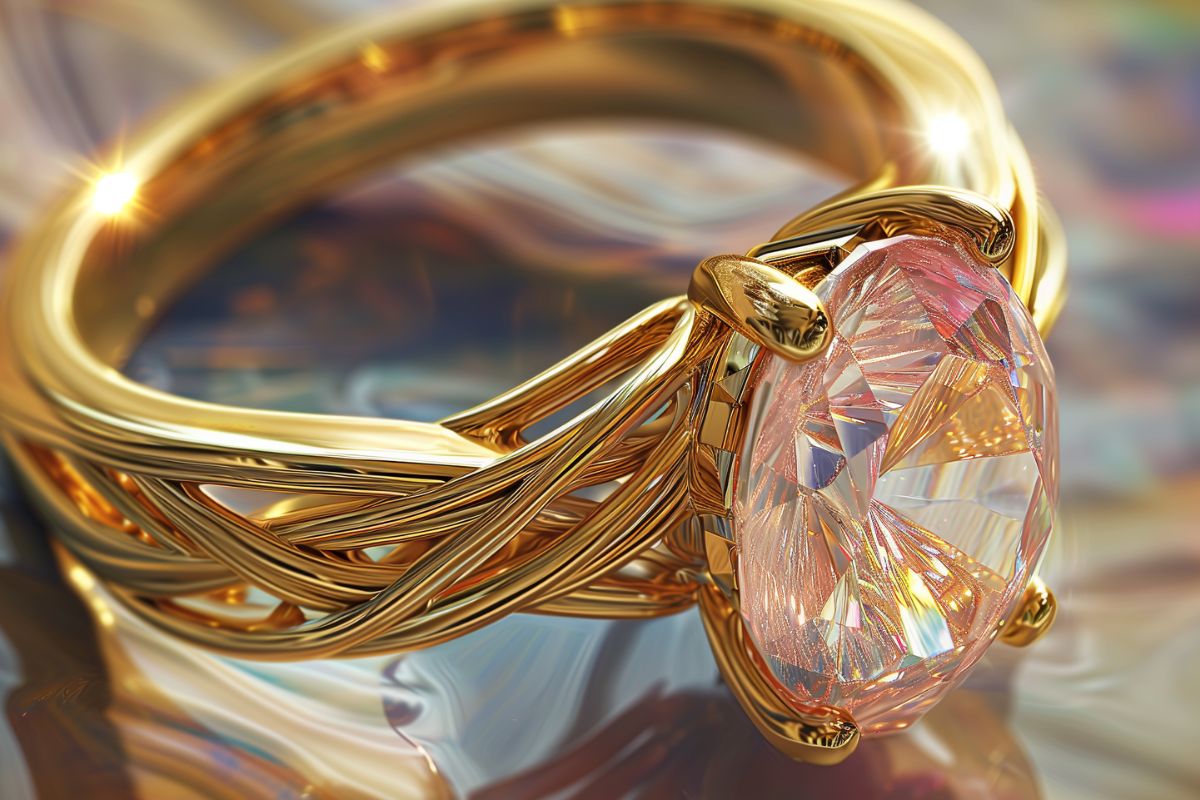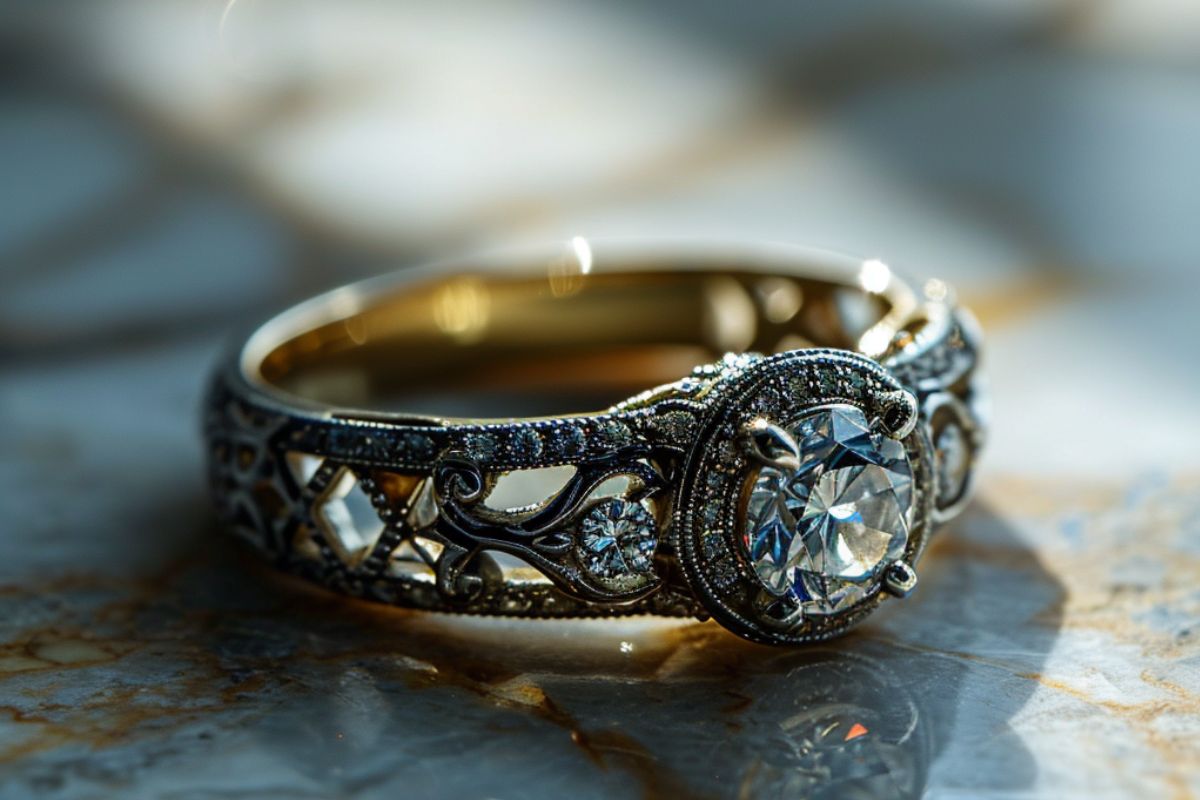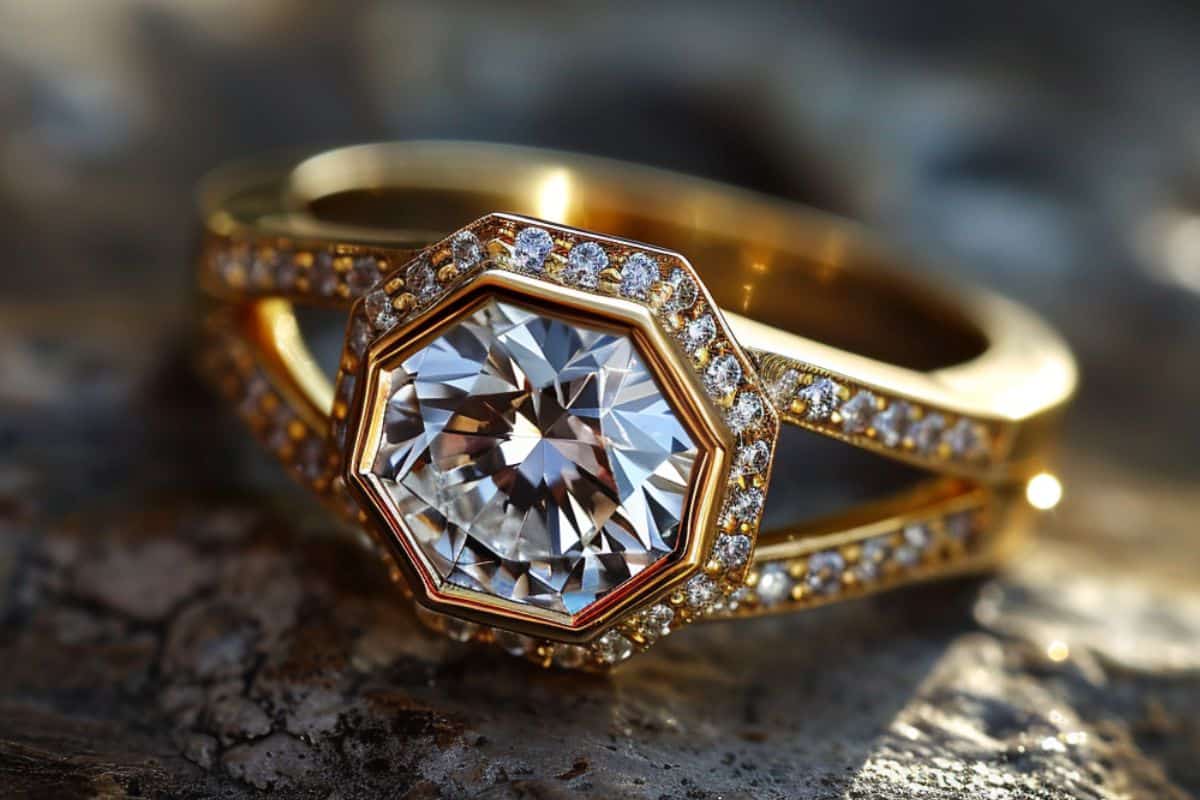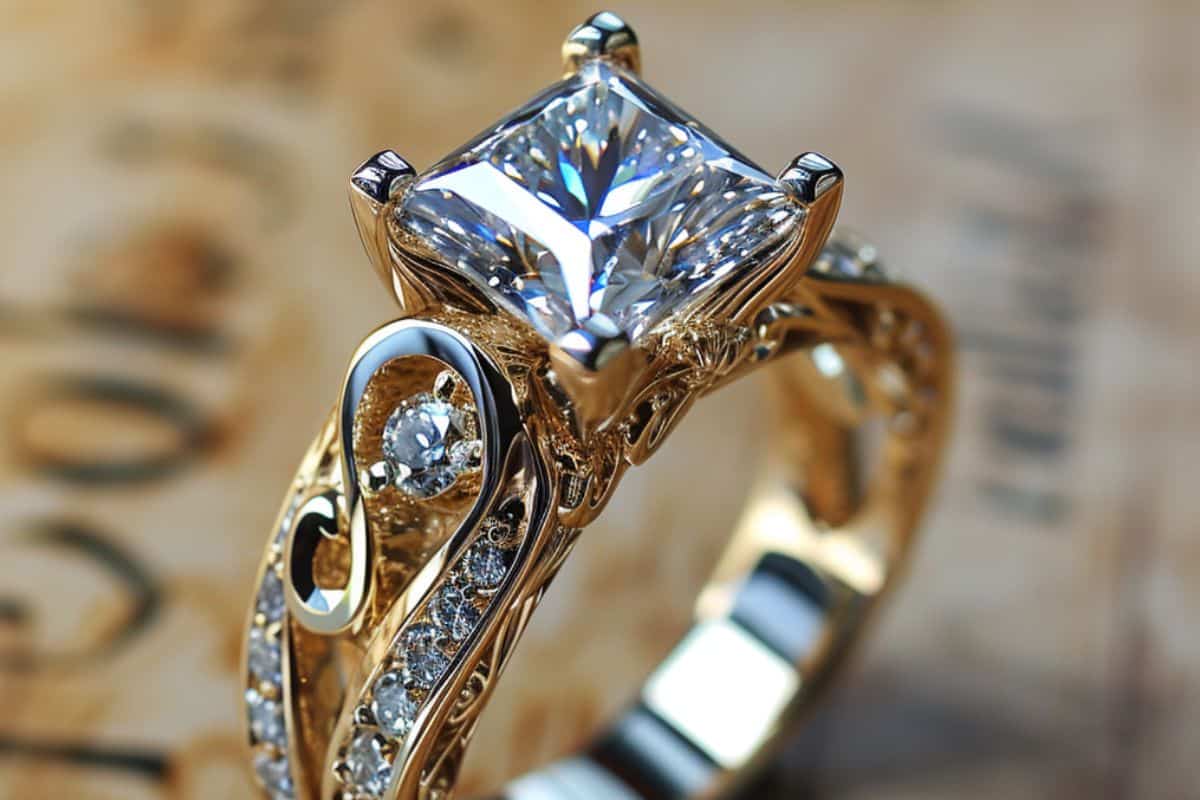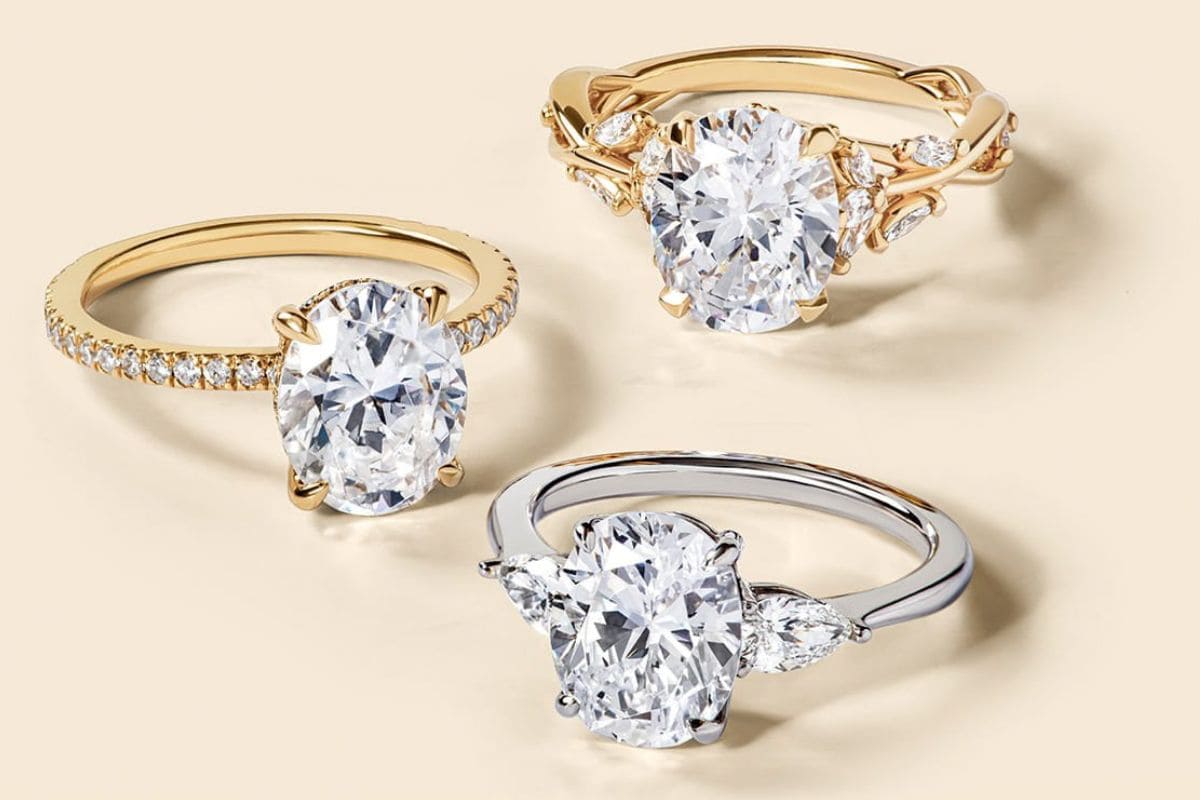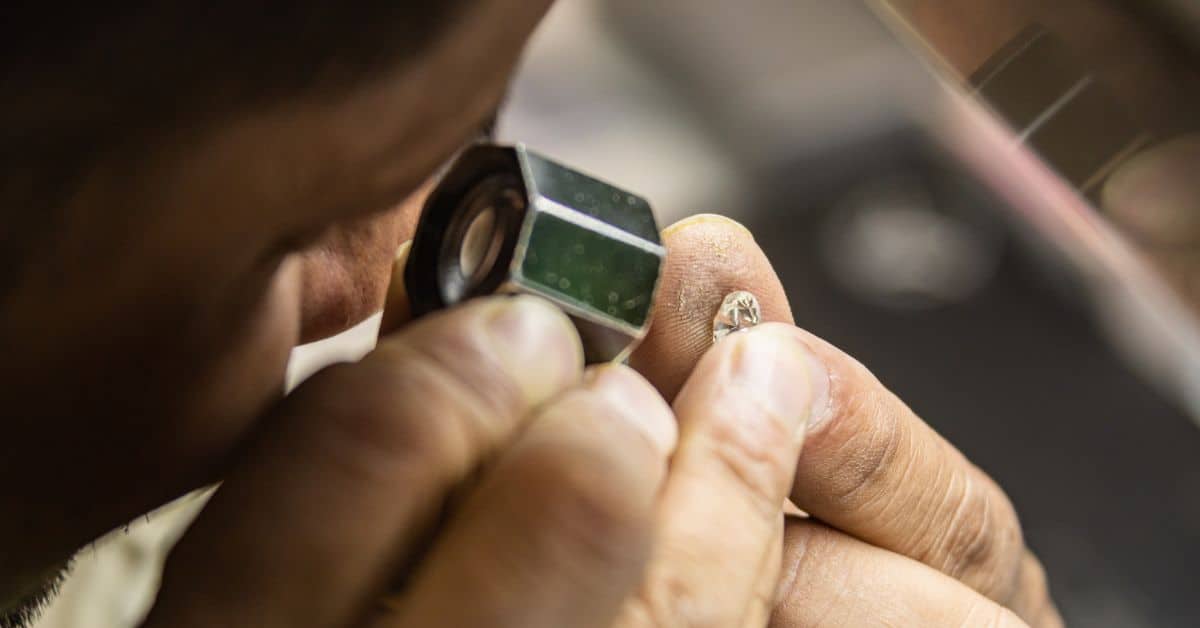
Pave settings feature a collection of small gems, usually diamonds, set closely together to accentuate the center stone. They’re held in place by prongs or small beads.
At a quick glance, most variations of pave appear similar, but each design is unique in the way diamonds are placed and held on the ring.
Let’s explore six types of pave settings and what to know about each.
1. Micro Pave
In a micro pave setting, small gems are fit closely together and secured by small prongs. The name is drawn from the size of the gems used in this setting, which are often less than 0.01 carats.
Take a look at this close-up image of a micro pave setting in 14K white gold.
Notice how the ring fits too levels of pave because the gems are so small.
In fact, some micro pave settings have dozens of stones lining the band, which presents the illusion of a continuous line of diamonds.
Some are eternity style rings, where the pave diamonds wrap all the way around, while others only cascade down one half of the ring.
For example, this wedding ring with a micro pave setting has 25 round cut diamonds with a total carat weight of 0.10.
The goal of this setting is to draw attention to the gems while diminishing the visibility of the metal.
2. French Pave (Fish Tail)
The French pave (or fish tail) setting is similar to micro pave. The goal is to minimize visibility of the metal.
It features small, V-shaped cutouts underneath each gem. They’re set flush with one another and held in place by multiple points on their table.
The design enhances the setting’s sparkle because light hits the pavilion instead of being blocked by prongs.
You can view the V-shaped grooves in this French pave engagement ring from James Allen.
There are 20 diamonds, totaling 0.16 carats. Each is placed in the cutouts that rise and fall along the top half of the shank leading to the center diamond.
Designing a French pave setting is labor-intensive because of the significant number of grooves in the shank.
Another downside is it’s difficult to resize. So have confidence in your ring size before ordering, or purchase from a vendor that offers free returns.
3. Petite Pave
Petite pave settings feature small prongs that hold gemstones in place.
While the prongs have some visibility, its name is drawn from the size of the prongs, not the diamonds.
Buyers choose this setting because it allows the pave diamonds to enhance the glimmer of the ring.
Check out this petite pave cathedral setting.
Rotate the image to view it from multiple angles and learn how the diamonds are set between the prongs. The combination of pave diamonds and a cathedral arch results in an elegant engagement ring.
Though this type of pave setting is similar to the micro pave, don’t confuse one for the another.
A micro pave setting earns its name from the tiny gems, while petite pave settings are about minimizing the prongs on the band to improve light performance.
One of the disadvantages of petite pave settings is their inability to hold larger diamonds. While pave diamonds are known for being small, the miniature prongs mean the accents will need to have a low carat weight.
If you want to maximize the size of the diamond accents placed on the band, you should opt against petite pave.
4. U-Cut (Scalloped)
The metal beads in a U-cut setting have a distinct cutout underneath that mimics a French cut.
The difference is the curve at the bottom. It contrasts with the sharp point of the V-shaped French cut.
You’ll also hear U-cuts referred to as scalloped pave.
U-cut pave settings expose more of the gem’s pavilion. It’s visible from more angles than the typical straight-on view.
Like many types of pave, it minimizes how much of the gems are covered by the shank and what’s holding them in place.
In this 14K white gold U-pave wedding ring, notice the U-shaped cutouts that rise and fall on half the ring.
Bits of metal extend over the gems’ tables to hold them in pace, but most of the table and sides are visible. It’s an exceptional complement to an engagement ring created with the same metal.
5. Bright Cut (Chanel)
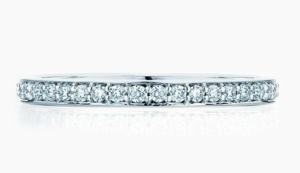
Bright cut (channel) is a classic type of pave setting that has grown in popularity because of its vintage aesthetic.
Gems are held between two metal walls and fastened in place by tiny prongs.
It mimics channel-set diamonds, where gems are placed inside the shank in shallow grooves.
Check out the image below of bright cut pave as part of an engagement ring.
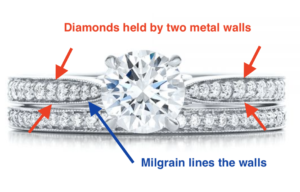
There are two layers of pave diamonds, and milgrain lines both walls. The amount of detail on this piece is stunning, which allows the ring to impress at a glance and a close-up viewing.
Bright cut pave solves one of the most common concerns with pave settings, which is the small diamonds falling out.
The double fastening provides extra durability for the gemstones. So it’s safer to wear during physical activity and isn’t as vulnerable to bumps and drops.
The setting does have a higher metal-to-diamond ratio and can have less sparkle because the gems don’t reflect light from as large of a surface area.
As you’re deciding which setting is right for you, choose whether securing the diamonds or enhancing the ring’s brilliance is more important.
If it’s the former, a bright cut pave setting may be the right choice.
6. Random Pave
Random pave is less popular. Its scattered design means it doesn’t have the same sense of elegance as other styles.
This alternative approach to traditional pave features a mix of gem sizes You’ll often find this style includes pave diamonds on the face of the ring instead of the shank, like the example below.
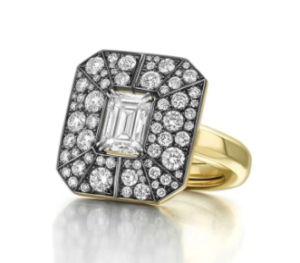
It includes an emerald cut in the middle surrounded by large and small round cuts. As you noticed in that example, it’s easy for the center diamond to get lost.
Some diamonds in a random pave setting weigh less than 0.01 carats, while others are the size you may find in a French or petite pave setting.
If you’re searching for an engagement or wedding ring, I don’t recommend random pave settings. It doesn’t have the cohesive aesthetic of classic settings.
Instead, find unique designs by exploring the different types of gems that can be placed in or on the shank or by choosing a cut such as princess or emerald diamonds.
Pave Settings Q&A
Q1: What are the main factors to consider when choosing between different pave settings? A1: Some factors to consider include the visibility of metal, the size of the gems, how securely the gems are held, the ease of resizing the ring, and the overall aesthetic and design you prefer.
Q2: How does the choice of pave setting impact the overall look and feel of a jewelry piece? A2: The pave setting can significantly impact a piece’s elegance, sparkle, and vintage or modern appeal. For instance, a micro pave setting might offer a delicate and continuous sparkle, while a bright cut pave setting might provide a more vintage and secure design.
Q3: Can the type of pave setting affect the maintenance or care required for a jewelry piece? A3: Yes, certain pave settings like bright cut may provide extra durability, thus requiring less maintenance, while others like micro pave or petite pave may require more careful handling to prevent gem loss.
Q4: Are pave settings more suited for particular types of jewelry, like engagement rings, over others? A4: Pave settings are often used in engagement and wedding rings to enhance the sparkle and complement the center stone. However, they can also be used in other jewelry like bracelets and necklaces to add a luxurious touch.
Q5: How does the metal choice interact with the pave setting chosen? A5: The metal choice can affect the visibility of the metal in the setting, the contrast with the gems, and the overall aesthetic. For instance, white gold or platinum might blend well with diamonds in a micro pave setting, enhancing the illusion of a continuous line of diamonds.
Q6: Is it common to mix different types of pave settings in one piece of jewelry? A6: It’s less common to mix different types of pave settings in one piece, as each type has a distinct look. However, creative or custom designs might incorporate mixed settings for a unique appearance.
Q7: Can pave settings accommodate gemstones other than diamonds? A7: Yes, while diamonds are commonly used, other gemstones can also be set in pave settings, potentially creating a different aesthetic or color contrast in the piece.
Q8: How does the craftsmanship of pave settings impact the overall quality and price of the jewelry? A8: Pave settings require precise craftsmanship to securely hold the gems and achieve the desired aesthetic. Higher craftsmanship often results in better quality and potentially a higher price point.
Q9: Are there any modern twists to traditional pave settings in contemporary jewelry designs? A9: Contemporary designs might experiment with gem sizes, metal types, or incorporate mixed metals and varied gemstones in pave settings to create unique, modern looks.
Q10: How does the size of the center stone affect the choice of pave setting in a ring? A10: The size of the center stone can influence the pave setting choice to create a balanced and harmonious design. Larger center stones might pair well with more subtle pave settings, while smaller center stones might benefit from more elaborate or sparkling pave settings to enhance the overall appeal.

Jacob Clarke
Jacob Clarke is the founder of TeachJewelry.com.
He earned an Applied Jewelry Professional Diploma from the Gemological Institute of America (GIA) and now brings you essential information about diamonds, settings, and more.
Jacob has consulted with leading jewelry brands, and his work has been cited in Clean Origin, Diamond Nexus and industry publications.
He's also a member of the International Gem Society.
He enjoys discussing jewelry with readers, so contact him with any questions at jacob.clarke@teachjewelry.com.

